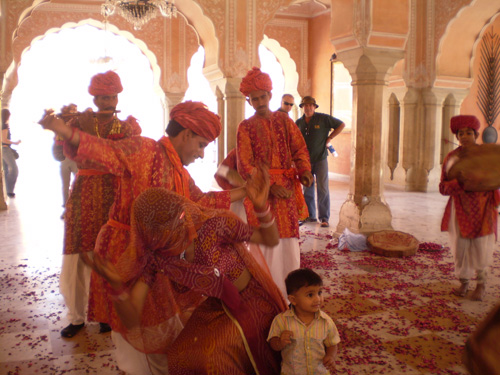Cultural Heritage
Overview of some of the traditional arts and sciences of India.

Music
There has always been a strong connection between music and religion in India. All Vedic (ancient) music, chants, and hymns with their accompanying instrumental music and dances were seen as a pathway to God.
The origins of classical music lie mainly in two works, the Rigveda and the Samaveda. The Rigveda is the oldest Veda (1500-500 BC) and is a collection of oral religious poetry handed down through the priestly families to the present day. The text and chanting rhythms have remained unaltered. The Samaveda was composed after the Rigveda. The word, ‘sa’ refers to hymns and ‘ma’ refers to the musical notes.
Indian music has a complex range of musical scales or ‘ragas’. There are 27 ragas and each one correlates with its own colour, fragrance, a part of the body, an energy centre and a particular state of mind. In India there are ragas for each season, time of the day, phases of the moon and location of the planets. Music also includes a rich heritage of folk songs and popular music.
Dance
Dance is one of India's oldest arts. Ritualistic dances are mentioned in the Vedas. During the Buddhist and epic periods, dancing was known as a court function and as a means of honouring a king or deity. It is part of religious festivals and celebrations and it celebrates the pattern of life and death.
The four classical dance styles - Bharat, Natyam, Kathakali and Manipuri have their origin in the Natya Shastra. In each style there are certain types of dances appropriate for the season and months of the year.
Ayurveda
‘Ayurveda’ is a Sanskrit word meaning the science or wisdom of life. As a traditional Indian medical system, Ayurveda evolved in India about 5000 years ago. The practice aims to achieve health by creating balance in a person’s physical, psychological, nutritional and spiritual life.
According to Ayurveda, all diseases are considered to be the result of an unbalanced state of bio-energies or doshas. The three doshas in Ayurveda are known as vata, pitta and kapha. Each of the doshas has its own qualities: Vata is cold and dry, Pitta is hot and moist and Kapha is cold and oily. All three doshas are always present, although in each person one is predominant. Any one can go out of balance due to inappropriate diet or life-style.
The prime aim of Ayurveda is to restore the healthy relationship and flow of these dosha energies. One of the most important factors in Ayurvedic diagnosis and treatment is to determine the individual constitution of the person. Ayurveda’s preventative aspects include sensible rules of lifestyle, daily diet according to constitution, as well as treatments that include Ayurvedic herbal medicines, and various techniques of Ayurvedic massage, breathing exercises etc.
In Australia, as well as throughout Europe and the United States, Ayurveda is well known and is being increasingly practised.
Yoga
The word 'Yoga' means union in Sanskrit. Yoga is known in western countries primarily as a system of exercises that increase flexibility and physical fitness. When combined with a system of breathing and mediation, yoga can produce a heightened sense of relaxation and reduces stress.
In addition to practicing exercises or poses, yoga classes may also include lessons on breathing, relaxation and meditation. Typically, a yoga class at a gym will be more focused on the purely physical benefits of yoga, while one at a yoga centre may delve more into the spiritual side.
Philosophy, drama and literature
Sanskrit is a continuous language and for over 3,000 years there has been an uninterrupted Sanskrit culture in India.
Sanskrit literature includes the songs of the Veda (3000BC), the Upanishads (700BC), the longest poem in the world, the Mahabharata, and its famous sub story, Bhagavad-Gita (500BC), and the Ramayana. .
Additionally there are the fables and stories of India, the scientific philosophy of the Shakhya, the psychological philosophy of yoga, the poetical philosophy of Vedanta and the poetry and dramas of outstanding artists such as Kalidasa. The 2,000 year old Kutiyattam of Kerala is one of the oldest surviving theatre traditions of the world.
